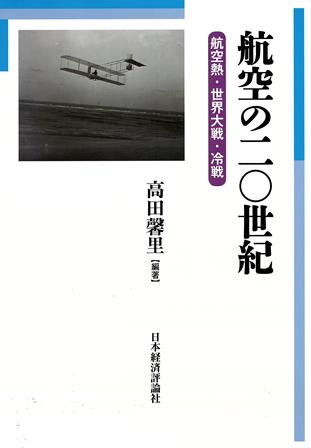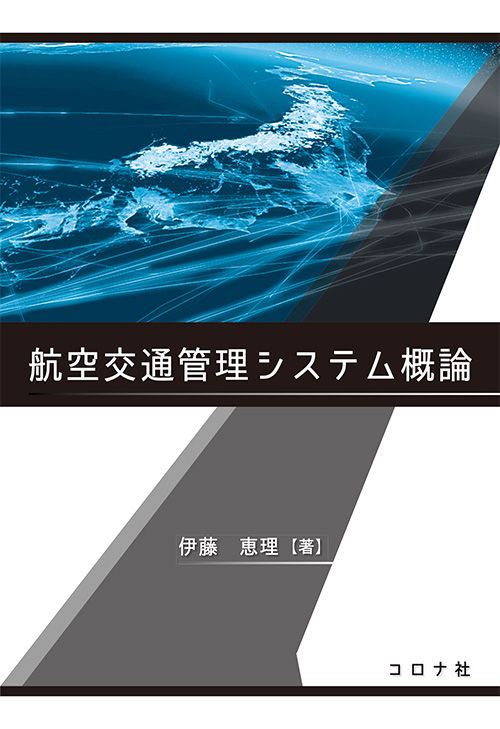
Title
RIHGAT Books series No.5, Research Institute for the History of Global Arms Transfer, Meiji University. Kōkū no 20-seiki (The Century of Aviation - Air-mindedness, World Wars, and the Cold War)
Size
440 pages, A5 format
Language
Japanese
Released
March, 2020
ISBN
978-4-8188-2551-2
Published by
Nihon Keizai Hyoronsha
Book Info
See Book Availability at Library
Japanese Page
The Century of Aviation: Air-mindedness, World Wars, and the Cold War, published in March 2020, is a collaborative study that focuses on the social and cultural impacts of aviation technology, particularly for faster, higher, and farther flights with heavier loads. Airplanes and aircraft are not just tools used for military and political purposes, but also machines of dreams that create a kind of popular culture that stimulates people’s imagination and drives their interest and passion for aviation. The passion, indeed, contains fervor, ardor, enthusiasm, fever, sufferings, and ordeals. In this book, we discuss these phenomena as “air-mindedness.”
The first part, “The Age of Air-mindedness,” deals with the popular culture of aviation and the spread of air-mindedness. Chapter 1, “Air-mindedness and World Record Breaking: Time, Subjects, and Direction of Technological Innovation” by Tomoji Onozuka, starts from the dawn of aviation and examines the process of forming the foundation of air-mindedness to realize the dream of the 20th century, focusing on the concept of record-breaking and the players who did it. The second chapter, “Enthusiasm for the Air in the Taisho Era,” by Jun Suzuki, analyzes newspaper reports and the characteristics of air-mindedness in Japan, which was heightened by charitable activities for the families of those who died in the air, and the militarization and masculinization of aviation as a background to the exclusion of women in the 1930s. Chapter 3, “Naval Aircraft Production Concept and Methodology: From the Aircraft Plant Concept to the Establishment of the Aircraft Department of the Kure Naval Arsenal” by Takeshi Chida, describes the process by which the department of the arsenal in Japan was established as the core of a naval aircraft production system that included private companies. Chapter 4, “Aircraft Development and Trans-Atlantic Flight: Junkers’ Challenge and ‘Air-mindedness’” by Michiteru Nagamine, focuses on the concept of aviation as a means to realize a peaceful world, as embraced by Hugo Junkers, who was one of the first to successfully develop an all-metal aircraft, and attempted a transatlantic flight at the same time as Charles Lindbergh.
Part II, “The Age of World Wars,” covers the Great War, the interwar, and World War II years. Chapter 5, “The Development of German–Japanese Aviation Liaison, 1919–1945: From Civil Air-mindedness to Military Aviation” by Nobuo Tajima, focuses on a German woman aviator, Marga von Etzdorf, who flew to Japan spreading air-mindedness worldwide. Focusing on the importance of the flight routes used by Etzdorf, this chapter describes in detail the efforts by both Germany and Japan to establish connecting air routes via Eurasia entangled in national and imperial interests. “The Military and the University in the Pre-War Era: The Case of the Institute of Aeronautics Research and the Department of Aeronautics at Tokyo Imperial University” by Hikaru Mizusawa is Chapter 6. It clarifies and compares the cooperative relationships between aeronautics research in universities and the military-aviation industries in Japan and the United States. Chapter 7, “Deployment and Supply of Japanese Air Power in the Pacific War” by Takashi Nishio, scrutinizes the point that the superiority of air power lay in the non-combat losses of aircraft deployed to the battlefield. It also identifies intermittent problems in the production capacity and the process of deployment and supply of air power on the Japanese side. Chapter 8 is “Failure of Licensed Production: The Engine Trouble of the Type 3 Fighter ‘Hien’” by Yuji Nishimuta. It analyzes the failure of technological transferring of the liquid-cooled engine, licensed from Daimler-Benz, and installed in the Type 3 Fighter ‘Hien,’ which caused a large amount of non-combat losses of the Japanese Pacific air power mentioned in Chapter 7.
Part III, “The Cold War Era,” deals with occupied Japan influenced by the U.S.–Soviet Cold War, decolonized India and Pakistan, and the U.S. aviation industry with the advent of the jet age in the 1960s. Chapter 9, “From the Extinction to the Revival of Japan’s Wings: The U.S.–Soviet Cold War and a Reexamination of U.S. Civil Aviation Policy toward Japan,” by Kaori Takada, outlines the process of Japan’s civil aviation revival in relation to international relations in the Cold War. Chapter 10, “The Formation of National Air Power in Cold War India,” by Katsuhiko Yokoi, depicts India’s post-independence movement toward building a national air power as an aggregate of military and civilian air power in relation to the transformation of its Cold War diplomacy, and to the shifting of arms transfers from Britain to the Soviet Union. Chapter 11, “Pakistani Civil Aviation and U.S. Assistance to Pakistan: 1950–1961,” by Waqar Zaidi, confirms the significance of Pakistan’s military bases in the American policy of securing strategic bases abroad and analyzes the role of the United States in developing airports and civil aviation in the South Asian nation. Chapter 12, “Feminism in the Jet Age: Emilio Pucci, Mary Wells, and the Braniff Airlines Stewardesses of the 1960s” by Phil Tiemeyer, focuses on the discrepancy between social and technological change in the 1960s and the gender order in the aviation industry. It is argued here that Braniff's marketing strategy did not emancipate working women in airlines, but reinforced the male-dominated order, which is partly evident even now in the industry.
(Written by ONOZUKA Tomoji, Professor, Graduate School of Economics / 2021)
Table of Contents
Part I The Age of Air-mindedness
Chapter 1 “Air-mindedness and World Record Breaking: Time, Subjects, and Direction of Technological Innovation,” ONOZUKA, Tomoji.
Chapter 2 “Enthusiasm for the Air in the Taisho Era Japan,” SUZUKI, Jun.
Chapter 3 “Naval Aircraft Production Concept and Methodology in Japan: From the Aircraft Plant Concept to the Establishment of the Aircraft Department of the Kure Naval Arsenal,” CHIDA, Takeshi.
Chapter 4 “Aircraft Development and Trans-Atlantic Flight: Junkers’ Challenge and ‘Air-mindedness,’” NAGAMINE, Michiteru.
Part II The Age of World Wars
Chapter 5 “The Development of German–Japanese Aviation Liaison, 1919–1945: From Civil Air-mindedness to Military Aviation,” TAJIMA, Nobuo.
Chapter 6 “The Military and the University in the Pre-War Era: The Case of the Institute of Aeronautics Research and the Department of Aeronautics at Tokyo Imperial University,” MIZUSAWA Hikaru.
Chapter 7 “Deployment and Supply of Japanese Air Power in the Pacific War,” NISHIO, Takashi.
Chapter 8 “Failure of Licensed Production: The Engine Trouble of the Type 3 Fighter ‘Hien,’” NISHIMUTA, Yuji.
Part III The Cold War Era
Chapter 9 “From the Extinction to the Revival of Japan’s Wings: The U.S.–Soviet Cold War and a Reexamination of U.S. Civil Aviation Policy toward Japan,” TAKADA, Kaori.
Chapter 10 “The Formation of National Air Power in Cold War India,” YOKOI, Katsuhiko.
Chapter 11 “Pakistani Civil Aviation and U.S. Assistance to Pakistan: 1950–1961,” ZAIDI, Waqar.
Chapter 12 “Feminism in the Jet Age: Emilio Pucci, Mary Wells, and the Braniff Airlines Stewardesses of the 1960s,” TIEMEYER, Phil.
Postscript.
Index.
Related Info
(in Japanese) by KIBATA, Yohichi (Kokusai Bukiiten-shi (The journal of Research Institute for the History of Global Arms Transfer), No.12, 63-66, 23th July 2021)
https://m-repo.lib.meiji.ac.jp/dspace/bitstream/10291/21932/1/kokusaibukiitenshi_12_63.pdf
(in Japanese) by IKUI, Eikoh (Asahi Shimbun April 11th, 2020)
https://book.asahi.com/article/13287966



 Find a book
Find a book


 eBook
eBook